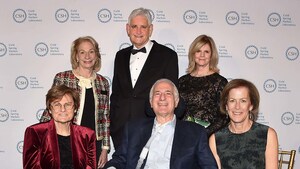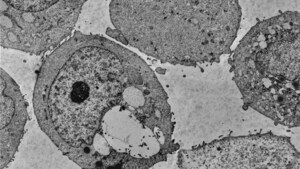New shape-shifting antibiotics could fight deadly infections
COLD SPRING HARBOR, N.Y., April 4, 2023 /PRNewswire/ -- In the United States alone, drug-resistant bacteria and fungi infect almost 3 million people per year and kill about 35,000. Antibiotics are essential and effective, but in recent years overuse has led to some bacteria developing resistance to them. The infections are so difficult to treat, the World Health Organization deemed antibiotic resistance a top 10 global public health threat.
Now, Professor John E. Moses at Cold Spring Harbor Laboratory (CSHL) has created a new weapon against these drug-resistant superbugs—an antibiotic that can shape-shift by rearranging its atoms.
Moses came up with the idea of shape-shifting antibiotics while observing tanks in military training exercises. With rotating turrets and nimble movements, the tanks could respond quickly to possible threats.
Moses wondered whether he could create a drug with similar flexibility, one that could change shape in response to its environment. "It's a wacky concept," he says. "I had no idea how to do that."
A few years later, Moses learned of a molecule called bullvalene. Bullvalene is a fluxional molecule, meaning its atoms can swap positions. This gives it a changing shape with over a million possible configurations—exactly the fluidity Moses was looking for.
Several bacteria, including MRSA, VRSA, and VRE, have developed resistance to a potent antibiotic called vancomycin, used to treat everything from skin infections to meningitis. Moses thought he could improve the drug's bacteria-fighting performance by combining it with bullvalene.
He turned to click chemistry, a Nobel Prize–winning class of fast, high-yielding chemical reactions that "click" molecules together reliably. This makes the reactions more efficient for wide-scale use.
"Click chemistry is great," says Moses, who studied this revolutionary development under two-time Nobel laureate K. Barry Sharpless. "It gives you certainty and the best chance you've got of making complex things."
Using this technique, Moses and his colleagues created a new antibiotic with two vancomycin "warheads" and a fluctuating bullvalene center.
Moses tested the new drug in collaboration with Dr. Tatiana Soares da-Costa (University of Adelaide). The researchers gave the drug to VRE-infected wax moth larvae, which are commonly used to test antibiotics. They found the shape-shifting antibiotic significantly more effective than vancomycin at clearing the deadly infection. Additionally, the bacteria didn't develop resistance to the new antibiotic.
Researchers can use click chemistry with shape-shifting antibiotics to create a multitude of new drugs, Moses explains. Such weapons against infection may even be key to our species' survival and evolution.
"If we can invent molecules that mean the difference between life and death," he says, "that'd be the greatest achievement ever."
Founded in 1890, Cold Spring Harbor Laboratory has shaped contemporary biomedical research and education with programs in cancer, neuroscience, plant biology and quantitative biology. Home to eight Nobel Prize winners, the private, not-for-profit Laboratory employs 1,000 people including 600 scientists, students and technicians. For more information, visit www.cshl.edu
SOURCE Cold Spring Harbor Laboratory

WANT YOUR COMPANY'S NEWS FEATURED ON PRNEWSWIRE.COM?
Newsrooms &
Influencers
Digital Media
Outlets
Journalists
Opted In






Share this article